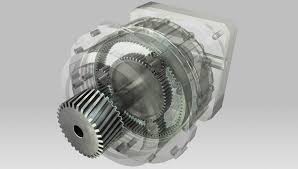Mobile:+86-311-808-126-83
Email:info@ydcastings.com
Optimizing Air Intake Chamber for Enhanced Engine Performance and Efficiency
Air Intake Chamber Enhancing Engine Performance
The air intake chamber plays a pivotal role in the performance of internal combustion engines. It serves as a crucial component in the air induction system, regulating the airflow that enters the engine. By ensuring that the engine receives an optimal mix of air and fuel, the air intake chamber significantly impacts the overall efficiency, power output, and emissions of the vehicle.
At its core, the air intake chamber is designed to collect and channel air from the atmosphere into the engine. This process begins as ambient air is drawn into the chamber through the air filter, which serves to trap dirt and other particulates, preventing them from entering the engine. Clean air is essential for optimal combustion, and thus, the air filter’s role is vital in maintaining engine longevity and performance.
The design of the air intake chamber itself can vary widely depending on the specific requirements of the engine it serves. Factors such as engine size, intended use, and performance goals all influence the shape and volume of the intake chamber. A larger chamber may provide a greater volume of air, which is beneficial for high-performance applications. Meanwhile, a well-optimized shape can enhance airflow dynamics, reducing turbulence and allowing for more efficient air delivery to the combustion chamber.
air intake chamber

One of the most significant advancements in air intake technology is the implementation of variable intake systems. These systems can alter the length and cross-section of the intake path depending on the engine speed and load conditions. At lower RPMs, a shorter intake can improve throttle response and low-end torque, while at higher RPMs, a longer intake path can maximize airflow, allowing for increased horsepower. This adaptability makes modern engines more versatile and enhances their performance across a wide range of operating conditions.
Furthermore, the materials used in constructing the air intake chamber have evolved. Traditionally, metal was the go-to material, but contemporary designs now often utilize high-performance plastics or composites. These materials are not only lighter, which helps reduce overall vehicle weight, but they can also be molded into complex shapes, providing improved flow characteristics compared to traditional metal designs.
In recent years, the significance of the air intake chamber has gained attention from automotive enthusiasts and manufacturers alike. Tuning and modifying the intake system have become popular among car aficionados seeking to improve engine performance. This includes the use of aftermarket air intake kits, which often feature higher-flow filters and optimized tubing to enhance airflow. While modifications can lead to noticeable performance gains, it's essential to approach them with an understanding of the potential impacts on engine tuning and emissions.
In conclusion, the air intake chamber is a critical component that influences engine performance, efficiency, and emissions. Its design and material composition play significant roles in how effectively air is delivered to the combustion process. As automotive technology continues to evolve, the air intake chamber will likely see further innovations, contributing to the ongoing pursuit of enhanced performance and environmental sustainability in engines. Understanding the workings and benefits of this essential part of the engine system can help both manufacturers and consumers make informed decisions regarding vehicle performance and modifications.
-
Unleash Wholesale with YD's Steel Investment CastingNewsAug.04,2025
-
Revolutionize Your Inventory with High-Quality Impeller SolutionsNewsAug.04,2025
-
Power Your Wholesale Business with Premium Electric Power AccessoriesNewsAug.04,2025
-
Elevate Your Wholesale Business with Premium Valve SolutionsNewsAug.04,2025
-
Elevate Your Wholesale Business with Premier Metal Castings SolutionsNewsAug.04,2025
-
Drive Your Wholesale Success with Premium Auto Water Pump SolutionNewsAug.04,2025











